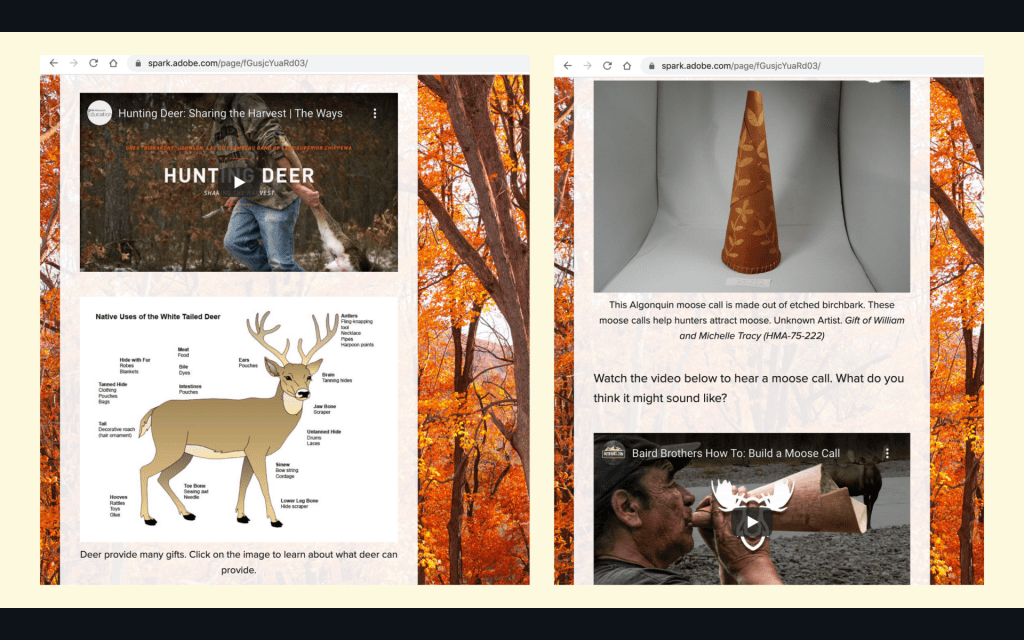Leah Hopkins, Community Engagement Specialist
“This Land is Home: A Seasonal Round in Native New England” is a self-paced, virtual learning module that explores how the seasons shape traditional and contemporary Indigenous lifeways in New England. Educators can supplement student engagement with “This Land is Home” by requesting free, accompanying worksheets via email.

Students will learn about different cultural practices directly from a first-person, Native perspective, practice new vocabulary in English and Algonquian, analyze and interpret objects from the Haffenreffer Museum of Anthropology’s collections, reflect upon their own relationship with nature, and identify similarities and differences between their own cultural seasonal activities and those of historical and contemporary Native people.
The seasonal round is a concept used by tribal communities, ethnographers, archaeologists, and researchers to illustrate the methods of food production and acquisition in a distinct community over the course of a single year, as determined by the seasons. In many cultures, seasonal rounds not only inform food production, but also the activities, celebrations and responsibilities of community members. Many tribal communities across Turtle Island (North America) have seasonal rounds that traditionally mark the passage of time, such as “berry picking season” or “harvest season,” or could specifically align with the lunar year and associated celebrations (i.e. “Hunting Moon,” “Maple Moon,” “Green Corn Moon”).
At the Haffenreffer Museum of Anthropology, we believe that learning directly from Native and Indigenous people is the best way to learn about Native and Indigenous cultures. “This Land is Home” was developed by a Native person to lead students directly to the voices and perspectives of Native and Indigenous people.
The Educator’s Guide provides links to tribal nations, tribal museums, tribal organizations, and other vetted resources for Native and Indigenous content. You will also find standards alignments, best practices, a pronunciation guide, and other supporting information for teaching with “This Land is Home.” We encourage you to explore this resource!
Launch This Land is Home | Launch The Educator’s Guide
Cover photography by Juan Arce